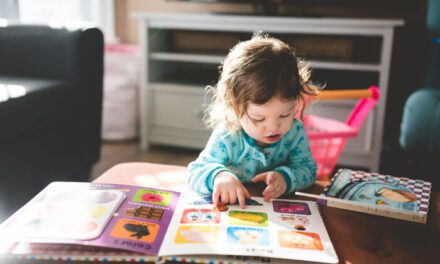The importance of structured and unstructured play is crucial to understand. As parents, our goal is to facilitate independence in our children because it fosters imagination and creativity. It also teaches them to enjoy their own company, gives them time and space to discover and work on their skills, interests, and hobbies.
But how do we encourage independence in younger children, you ask?
One of the best ways is through play.
The confidence they develop while playing on their own helps them feel comfortable and capable while learning and doing other tasks on their own.
For infants and toddlers, playtime is an important period during which they get to discover and use their various skills such as dexterity, cognitive skills, social skills, emotional skills, creativity, and imagination.
It is during playtime that they effortlessly explore and decode new information, observe and learn to comprehend the world around them.
The Stages Of Play
Manage your expectations while encouraging independence in young children.
As children develop and grow, so does their way of playing. Mildred Parten did some great work observing youngsters at play, and developed the stages of social play for children.
Let’s take a brief look at how social play develops and changes over time for children. There are six stages of social play and it starts at birth.
- Unoccupied Play (Birth-3 Months): They learn about and discover how their body moves.
- Solitary Play (Birth-2 Years): They play alone and are not interested in playing with others quite yet.
- Spectator/Onlooker Behavior (2 Years): They watch and observe other children playing but will not play with them yet.
- Parallel Play (2+ Years): They play alongside or near to others but do not play with them.
- Associate Play (3-4 Years): They start to interact with others during play, but there is not a large amount of cooperation required, e.g. kids playing on a playground but doing different things like climbing, swinging, etc.
- Cooperative Play (4+ years): They play with others and have an interest in both the activity and other children involved in playing.
Structured Play
The name says it all – a play session/activity that has structured instructions, is goal-oriented and is led by adults.
It doesn’t need to be formal or highly organized. It can include any physical or cognitive (brain skill) activity. For example, showing them how to play with blocks, how to use a spoon or a tumbler, how to play with puzzles, or how to throw a ball.
As facilitators we can use structured play to introduce new toys, new activities and new tasks that infants and toddlers may not discover on their own.
Benefits Of Structured Play
- Exposes children to a variety of activities that build strength, balance, and coordination.
- Teaches specific life skills: such as cleaning up after playing, organizing the toys, etc.
- Improves listening and comprehension skills.
- Assists delayed gratification.
- Nudging them out of their comfort zone ultimately helps them become well-rounded and more confident individuals.
- This type of play also equips them to be comfortable leading others and following two essential teamwork traits.
Unstructured Play
A play session/ activity that has NO structured instructions, is open-ended and is led by the child himself. It can be any activity or play; indoors or outdoors the child wishes to do.
It is during unstructured play, children get to explore their creativity, they can improvise any form of activity.
Unstructured play provides children with experiences in creativity, imagination, decision-making, problem-solving, and the development of overall emotional and social skills.
Researcher Tassoni states that “children tend to concentrate and persevere for long periods when they are ‘in control’ of their learning. Their levels of motivation are higher because they have chosen something that appeals to them.”
Note: Keep in mind that while unstructured play isn’t controlled by adults, that doesn’t mean you shouldn’t supervise your kids while they’re playing, especially if they’re playing outside.
Benefits Of Unstructured Play
- Children are free to experiment and try different things.
- They learn to encounter and solve problems on their own.
- Encourages the use of imagination and supports social and emotional development.
- Because children are in control of their actions and activities, it helps them develop independence and makes them self-reliant.
- Structured play teaches your child social rules. But unstructured play gives him opportunities to observe, respond, and adapt in ever-changing social situations.
Examples Of Structured & Unstructured Play Using The Same Toy/Activity
You can use any toy or activity for structured as well as unstructured play, depending on how exactly you use them.
Ball
During a structured play, you may teach the child to throw the ball into a hoop (basketball) or towards a bat (baseball).
On the other hand, during unstructured play, just step back and let the child decide how they wish to play with the same ball. They may throw the ball against the wall or wish to play catch-it-up.
Ring Stacker
During a structured play, you may teach the child to stack rings according to size and shape, correct them and show them how to do it.
And during unstructured play, just step back and let them stack the rings in any order of color, shape, and size.
Blocks/Legos
During a structured play, you may teach the child to build blocks/legos based on the instructions.
During unstructured play, just step back and let them build whatever and however they wish to.
Results
The child gets to learn the correct way to play with the toy and all the skills associated with it during structured play.
During unstructured play, the child gets to be creative, test his skills, explore his interests, learn to make decisions.
Balance Is Key
Balance is the key. Only when being exposed to both structured play and unstructured play environments, children will have a greater chance to develop logical and creative thinking skills.
A healthy, balanced playtime will have an equal focus on helping a child’s wellbeing and growth.
In some instances as parents, we might lean towards one of the two types of play. Let’s say, we expose them only to structured play – where there is always parent-figures teaching, helping, and showing the child how to play. Then, there are chances that the child may have difficulty making decisions on his own and turn into a clingy child.
On the other hand, if we expose them only to unstructured play – where we give them all sorts of toys and time to figure things out by themselves, then the child might have difficulty understanding rules and boundaries. They might have a tough time accepting social and emotional norms.
Teach your baby to play with and without you—and raise a more curious, confident, self-reliant kid!
How can you know which play to pick and when?
- Check the basics. Is he really fussing just to be held? Maybe he’s hungry, thirsty, or maybe he needs his diaper changed more often.
- Look at his energy levels- bored, tired, or sleepy?
- Keep a plan B ready: an alternative toy or activity.
- Observe your child’s strengths and weaknesses, and plan accordingly.
At all times during play, children should be fully immersed. If children lose focus, it may be time to switch to a different kind of activity.
“Play is the highest form of research”.
–Albert Einstein






